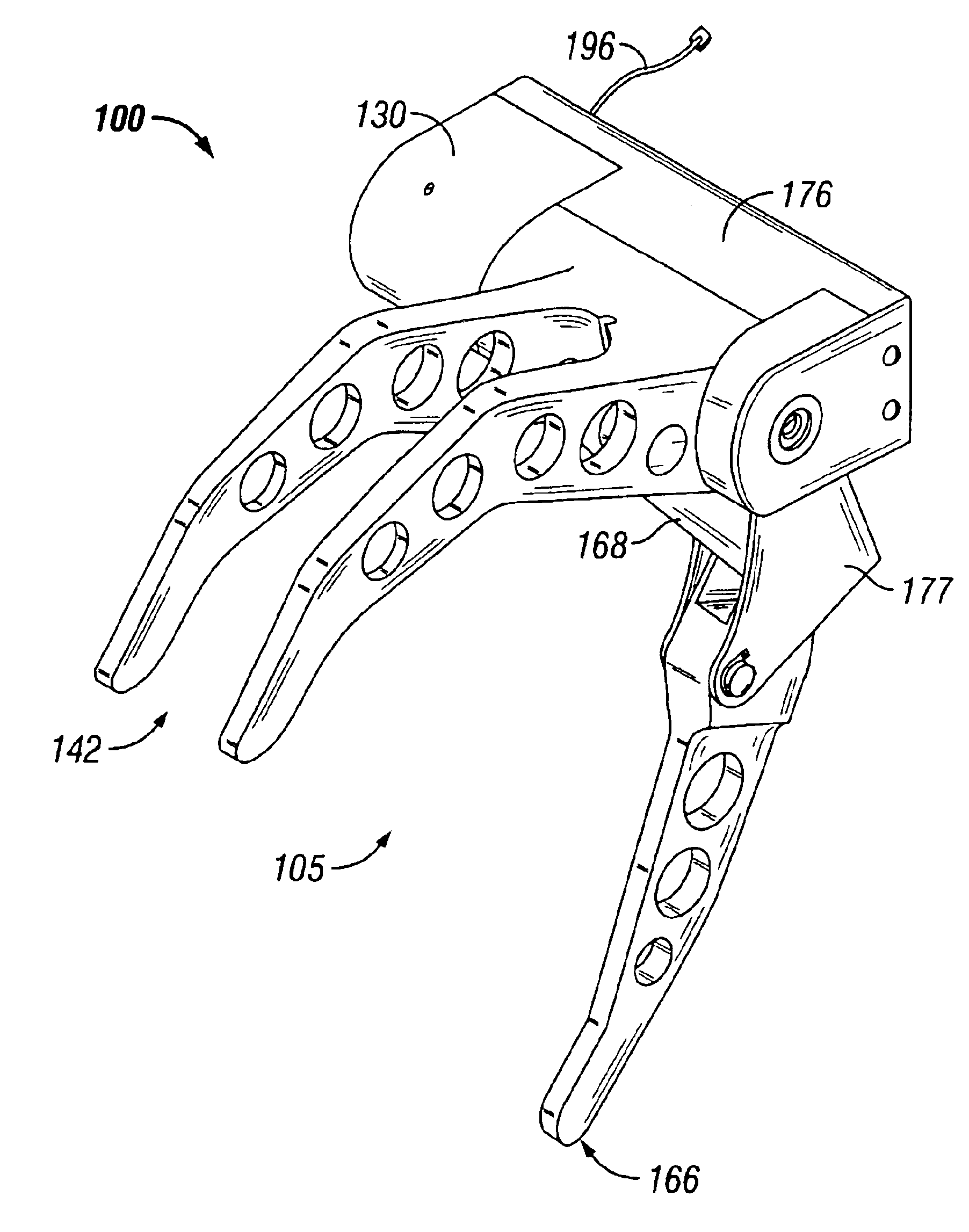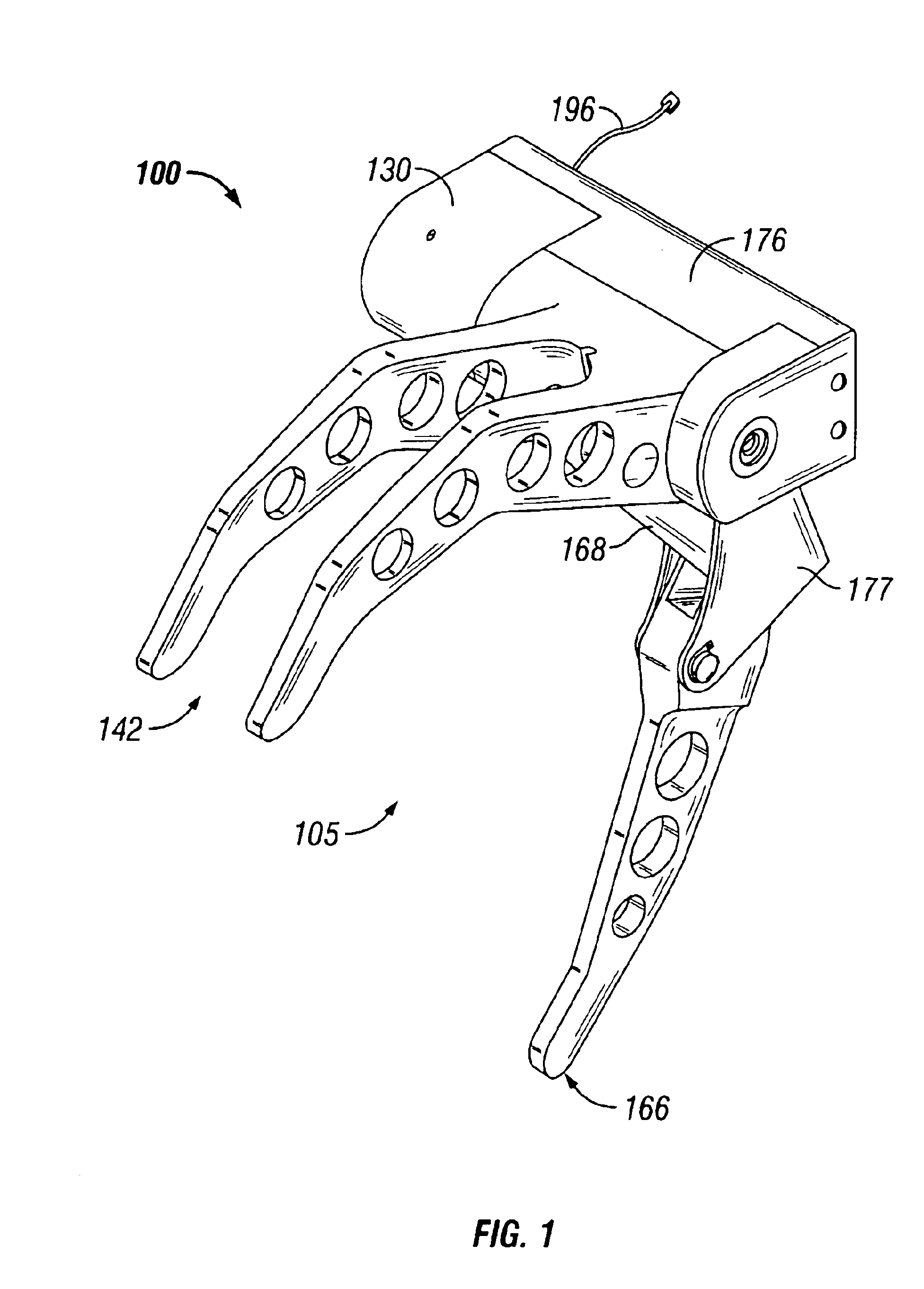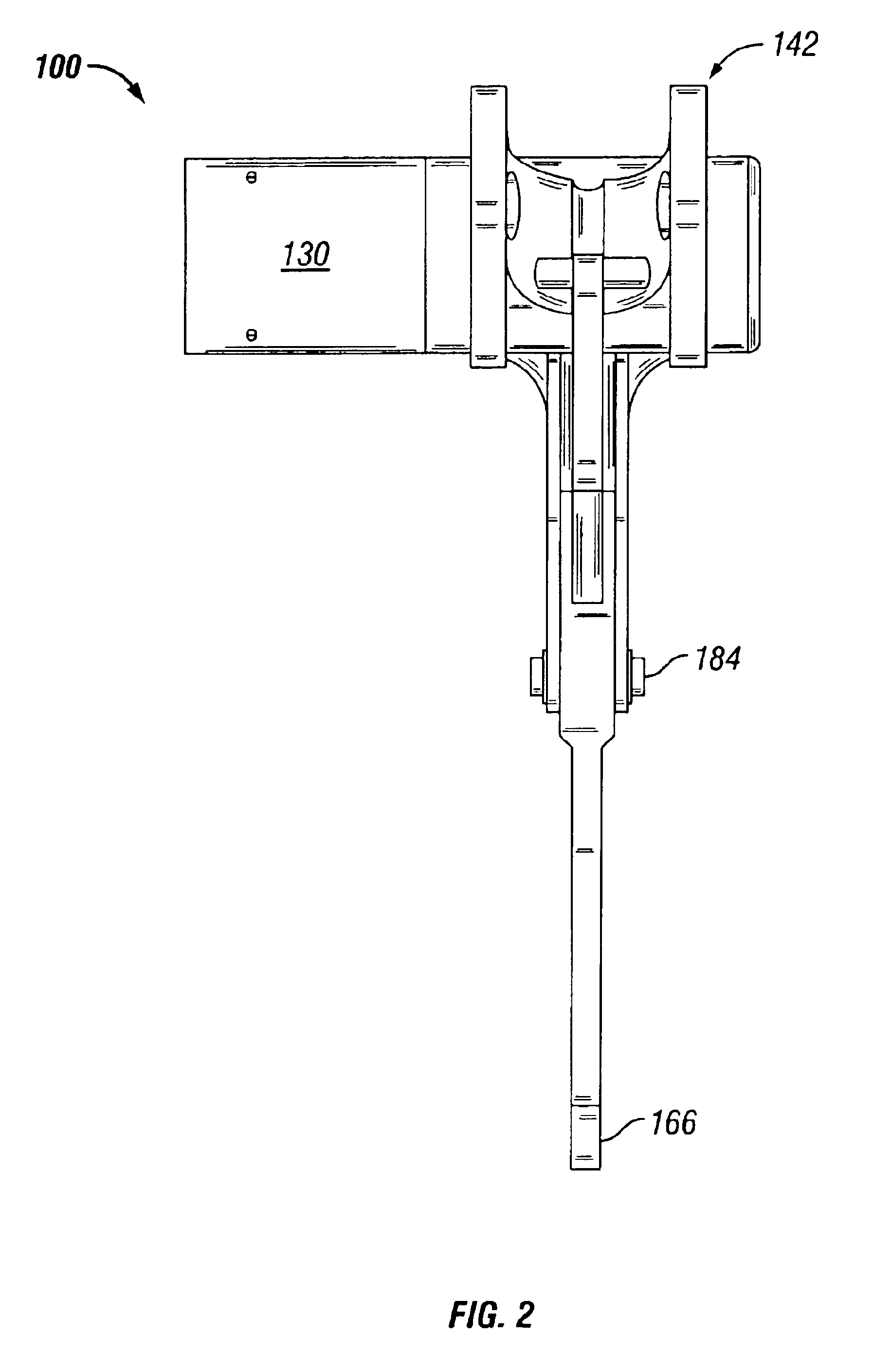Externally-powered hand prosthesis
a hand prosthesis and external power technology, applied in the field of external power hand prosthesis mechanism, can solve the problems of poor cosmesis, lack of adequate retention, and the requirement for a harness and control cable to be worn, and achieve the effect of conserving residual wrist motion
- Summary
- Abstract
- Description
- Claims
- Application Information
AI Technical Summary
Benefits of technology
Problems solved by technology
Method used
Image
Examples
Embodiment Construction
[0035]Referring now to the drawings wherein like reference numerals designate corresponding parts throughout the several views, FIGS. 1-10 illustrate components of the externally-powered hand prosthesis 100 according to the present invention, hereinafter generally referred to as “prosthesis mechanism 100.”
[0036]As shown in FIGS. 1-10, the present invention provides a highly compact externally powered hand prosthesis mechanism 100 for use by persons with amputations at or proximal to the level of the metacarpophalangeal joint (i.e. persons who have lost one or all digits (thumb and fingers) but still retain a palmar surface of the hand, and persons with high-level (i.e. above-elbow) amputations where weight considerations are of paramount importance. As discussed above, generally a prosthesis is only recommended for cases where all digits (thumb and all four fingers) have been lost at a level equal or proximal to the metacarpophalangeal joint.
[0037]The majority of mechanical hands th...
PUM
 Login to View More
Login to View More Abstract
Description
Claims
Application Information
 Login to View More
Login to View More - R&D
- Intellectual Property
- Life Sciences
- Materials
- Tech Scout
- Unparalleled Data Quality
- Higher Quality Content
- 60% Fewer Hallucinations
Browse by: Latest US Patents, China's latest patents, Technical Efficacy Thesaurus, Application Domain, Technology Topic, Popular Technical Reports.
© 2025 PatSnap. All rights reserved.Legal|Privacy policy|Modern Slavery Act Transparency Statement|Sitemap|About US| Contact US: help@patsnap.com



